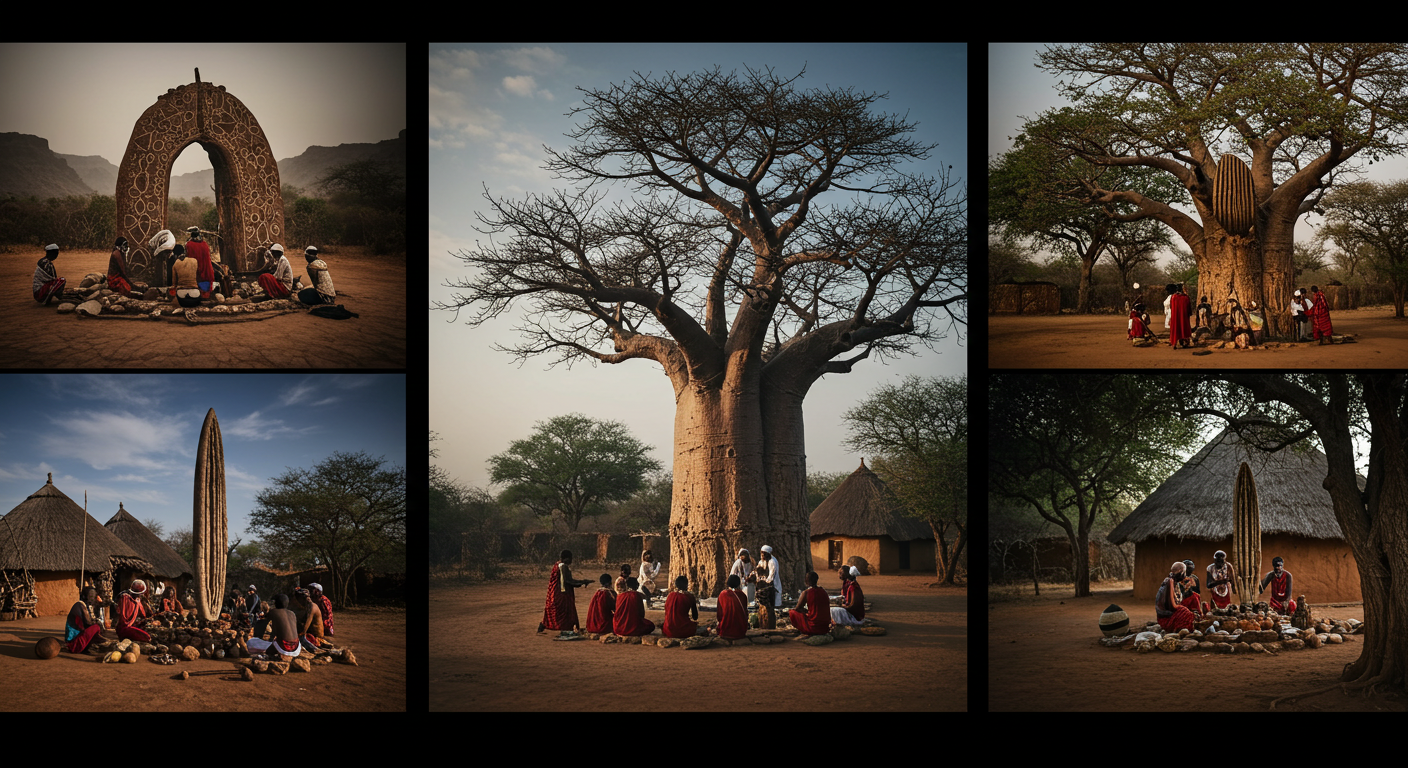Africa is home to some of the world’s most awe-inspiring sacred sites—places infused with spiritual power, ancestral reverence, and ancient tradition. While some, like the Pyramids of Egypt or Lalibela’s rock churches, are widely known, many others remain hidden gems—untouched by mass tourism but brimming with meaning and mystery.
Whether you're a spiritual seeker, a cultural enthusiast, or a curious traveler, these lesser-known sacred places offer a chance to experience Africa’s soul in quiet, profound ways.
1. Osun-Osogbo Sacred Grove – Nigeria
Nestled on the outskirts of Osogbo in southwestern Nigeria, this forest sanctuary is dedicated to Osun, the Yoruba goddess of fertility and water. The grove is a UNESCO World Heritage Site and features shrines, sculptures, and sacred trees.
Why it’s sacred: It’s one of the last remaining Yoruba sacred groves, believed to be inhabited by the spirit of Osun herself. The annual Osun-Osogbo Festival draws thousands for spiritual cleansing and cultural celebration.
2. Lake Fundudzi – South Africa
Hidden in the Soutpansberg Mountains of Limpopo, Lake Fundudzi is sacred to the Venda people. It is said to be guarded by ancestral spirits and is surrounded by mystical taboos—like never pointing at the lake directly.
Why it’s sacred: The lake is believed to be inhabited by the python god, and its waters are used in sacred rituals. Access is limited, and even today, it retains an aura of mystery and respect.
3. Lalibela Rock-Hewn Churches – Ethiopia
Although fairly well-known, many travelers are unaware of the spiritual depth of these 12th-century monolithic churches carved into the rock. Built to replicate Jerusalem, they continue to serve as places of worship and pilgrimage.
Why it’s sacred: Built by King Lalibela after a divine vision, these churches are considered a “New Jerusalem” and are active sites for Orthodox Christian rituals.
4. Ouidah Sacred Forest – Benin
In the heart of Vodun (Voodoo) country lies the Sacred Forest of Kpassè, honoring the spirits and gods of the traditional Beninese religion.
Why it’s sacred: The forest contains Vodun sculptures, ancient trees, and shrines, including one to the god of thunder, Shango. It plays a key role in the annual Vodun Festival held each January.
5. Mt. Nyangani – Zimbabwe
Zimbabwe’s highest mountain is sacred to the Shona people, who believe that it’s the dwelling place of powerful ancestral spirits. Visitors are warned to seek permission from local elders before climbing.
Why it’s sacred: People have mysteriously disappeared on the mountain—locals believe this is due to angered spirits. It’s a place of offerings and spiritual respect.
6. Aït Benhaddou (Berber Granary & Shrine) – Morocco
This ancient ksar (fortified village) in southern Morocco has deep cultural and spiritual significance to the Amazigh (Berber) people.
Why it’s sacred: Beyond its cinematic fame, it’s home to ancestral shrines and communal granaries believed to hold spiritual protection for the community.
7. Nabta Playa – Egypt/Sudan Border
Predating Stonehenge, Nabta Playa is an ancient megalithic site used by Neolithic people for astronomical and ceremonial purposes.
Why it’s sacred: Alignments of the stones suggest early forms of star worship and seasonal rituals tied to life and fertility in the desert.
Tips for Visiting African Sacred Sites
Respect rituals and taboos: Ask for guidance from local custodians.
Don’t photograph everything: Some sites or ceremonies prohibit photography.
Give offerings or support: Donations, symbolic gifts, or community support are often welcomed.
Africa’s sacred places invite quiet reflection and reverence. They remind us that the continent is not just rich in nature and culture—but also in spirit. Whether carved into mountains, hidden in forests, or honored through dance and song, these sites connect us to something deeper—something eternal. And that, perhaps, is the most sacred journey of all.



